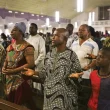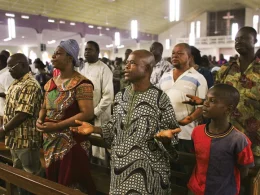Frank Viola, through his book “Reimagining Church: Pursuing the Dream of Organic Christianity,” has been able to raise vital issues that confront the traditional Church as we know it and the challenge of continued reliance on the framework of such a “model” of churches within contemporary society. Frank argues that a revolution is upon us regarding the non-viability of the present model of church structure. He observes that the answer to this problem is not to reform or renew as many have tried to do, but to completely overhaul the whole system by adopting the organic approach: “that is relational in its functioning; scriptural in its form; Christ-centered in its operation; Trinitarian in its shape; communitarian in its lifestyle; non-elitist in its attitude; and nonsectarian in its expression.”
Frank is saddened that the Church of Jesus Christ has regressed rather than progressed from her earliest practices of organic church formation as expressed in the New Testament. More than anything else, he singled out the clergy system practiced by many of the institutional churches as the sole culprit for the malfunctioning of the church system.
Frank, for instance, inquiring into how we got to where we are in terms of clergy/laity class distinction, curiously asked, “How did Christians move from seeing themselves as being part of one church in the city to a countless number of sects in the same town?” He believes that the emergence of the hierarchical system, through the clergy/laity distinction, is what fractured the priesthood of all believers. He argues that once the clergy /laity rift was hatched, it became easy for different clergy members to divide along theological leanings. This caused the people to gather and form communities around their most favored leader (or doctrine) instead of Jesus Christ alone. He argues that the clergy system, which is foreign to the New Testament, obscures how churches should be organized organically. He suggests that churches should be born and sustained by spiritual life rather than being contrived by human institutions, controlled by a chain of command, shaped by lifeless religious ceremonies, and held together by mere pious programs.
Frank, however, imagines a radical new dawn for the Church. Therefore, he outlined four significant ways through which the paradigm for reimagining the Church could be based. They are:
- Biblical Blueprintism – This is an idea that seems to suggest a mimicking of the New Testament practices for church restoration. Frank appears to be unfavorably disposed to this notion, as he argues that no such blueprints for church practices were ever recorded in the New Testament.
- Cultural Adaptability – This concept emphasizes the contextualization of biblical messages in various cultural settings. By contrast, Frank was quick to warn about the danger of over-contextualization, a situation in which scriptures lose their relevance in application.
- Post-Church Christianity – This paradigm involves the practice of Christianity without belonging to an identifiable church community. It is based on the idea of being spiritual rather than being “churchy.” Frank argues that this concept is unbiblical and inconsistent with what we find in the New Testament, where the Christian communities were locatable and identifiable.
- Organic Expression – This is the type of Church that Frank favors. He believes that the New Testament is self-evident for this type of Church. He argues that the New Testament is a record of the Church’s DNA at work. The Book of Acts and the Epistles bear witness to these genetic codes of the Church of Jesus Christ, expressing itself in various cultures during the first century as a living spiritual organism.
However, as promising as Frank’s book seems, I have struggled to see how church leaders could implement some of his ideas in a real-life setting, void of the notion of an ideal world. The truth is, there’s no such thing as a perfect world. The world is complex, complicated, and largely unpredictable! In real-world scenarios, circumstances will pull the ideas in different directions and may become what was not intended originally. Frank’s most reimagined ideas for the Church sound very good on paper, but we know that human complexities and dynamics prevent the smooth and straightforward path. This reality gives me great concern over the proposition of the Church operating organically, as Frank tries to put forward.
Despite some concerns, I will take my time to examine some of those proposals that Frank is rooting for in his amazing book. The first is the idea of the absence of human officiation in the early Church. Frank frowns at the idea of having a clergyman leading the Church. He wants it eliminated by every means. Instead, Frank favors a plurality of elders as the alternative. He argues that not only was the oversight of the Church shared, but they were also indigenous. I agree with him that there may have been many incidents of some clergymen causing impediments in the progress of some local churches. Still, I want to argue that eliminating the clergy structure and the idea of elders emerging long after the Church was born is perhaps only good for the early Church that was still in formation. For the Church to continue to insist on this approach in this day and age is for the Church to perpetually remain in her infant stage. We will not appreciate the weakness of such an idea until we have it on a full and large scale, like the clergy system that he’s critiquing. In my estimation, I see the clergy system as a creation of necessity because of the prevailing and peculiar need for it. It may not be the best system, but it is undoubtedly required to meet the present conditions in the Church.
Similarly, associated with this notion of plurality of elders is his idea of divine rule by consensus, whereby a local church will base their Church’s decision-making on everybody within the local Church coming together to reach an agreement, as Christians practiced it in the early Church. His objective here is to eliminate the hierarchical structures and make decision-making communal. Some of these ideas look grandiose and are hardly practicable in real-life scenarios because humans will always be divergent in their views.
Frank also raised the question about accountability or, in his own words, “Who is your covering?” He argues that the “Bible never consigns accountability to human beings. It always consigns it exclusively to God”. I disagree with him because if the Church refuses to be accountable, there will be more chaos than the freedom he can ever imagine. The Bible may not be explicit about some issues, but carefully reading it can help us see that they are sometimes inferred. Jesus, for instance, needed to submit to the baptism of John to fulfill all righteousness (Matthew 3:13-16). Elisha had to submit to Elijah for a double portion of his anointing (2 Kings 2:1-15). Paul needed to go to Jerusalem to rehearse the details of his ministry to Peter, James, and John, whom he recognized as the pillars among the apostles. “And I went up by revelation and communicated unto them that gospel which I preach among the Gentiles, but privately to them which were of reputation, lest by any means I should run, or had run, in vain” Galatians 2:2 (KJV). Therefore, I don’t understand how we can organize human communities smoothly without some form of order or human figures sanctioning such order. On the one hand, I agree that some of the so-called church leaders sometimes abuse this question of accountability or denominational covering. However, to leave every Church autonomous will never be a wise decision in the long run, not even in this contemporary society where a scandal in one small local Church is a scandal to the whole Body of Christ.
Frank’s ideas are still promising, and I long to see changes in how churches could be organized organically, not precisely in the way and manner that he imagined it, and not as the only way or the best way to structure the Church. I maintain that his ideas are only suitable in a world where the Church doesn’t have forces contending against her survival. If there’s anything his book has done for me, it has further entrenched my awareness that the present church structure we run is not perfect and requires more work.
One area in his book that I find fascinating is the fifteenth chapter, which asks, “Where do we go from here?” In this chapter, he lists various approaches and means by which people have tried to address the Church’s multiple problems: the megachurch approach, the third-wave movement, the cell church, and the Emergent church approach. None of these approaches has produced one hundred percent positive results. But the attempts made so far give me some hope that people know something is wrong and it needs fixing. My position is not to advocate for any singular solution as a fit for all situations, like Frank would. Instead, I support adapting all approaches mentioned above depending on the context of their application. I firmly believe that for faith communities to be relevant in our contemporary society, we must reinvent the whole notion of the Church to suit the cultural norms of the hour without necessarily losing the purity and vital messages that the gospel carries.
The more crucial and difficult task is how we would want the Church of the twenty-first century to look. I intend to use my theological education more dynamically, rather than the traditional approach that is becoming less desirable in today’s society. By way of pragmatism, I will adopt a distinct and similar approach that Jesus used during his earthly ministry. Jesus practiced as a new kind of rabbi, defying the norms of the traditional rabbis. The sad story in the church world is that many people are ignoring the rapid changes in the world and the potential of creatively meeting these challenges in the 21st century. I think Frank is underplaying the damage his changes could do when abandoning the clergy system outright and putting on the church practices of the early Church as though still in the first century.
Despite all the associated flaws, traditional church settings will not go away completely; we will continue to have them around. But the profound truth is that ministry will “wear a new garment” that will take ministry out of the Church’s four walls. This will involve mobilizing people to enhance the quality of humanity on a large scale. This will be the core of my ministry – building people rather than monuments. The reason why we have the School of Transformational Leadership is to provide an alternative solution to some of the concerns raised by Frank.
At the School of Transformational Leadership, we move right into the marketplace to engage the culture to transform it, rather than isolate ourselves from the culture. Contact us today, and an enrollment specialist will work you through any of our personalized curricula and programs.













You are good to go